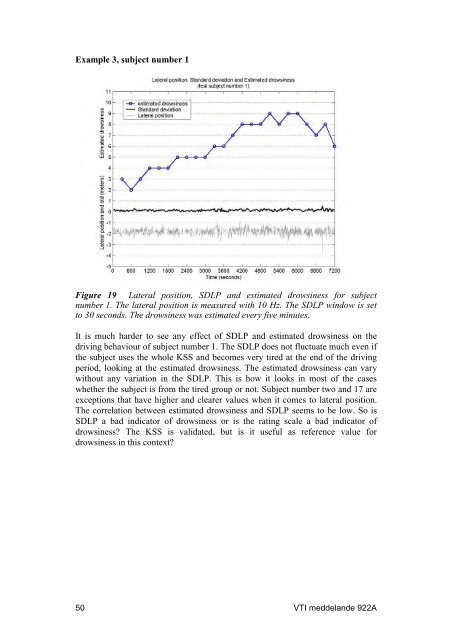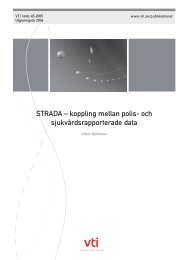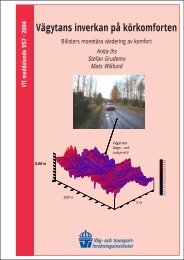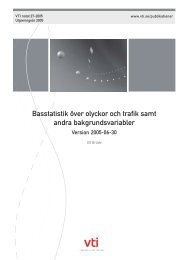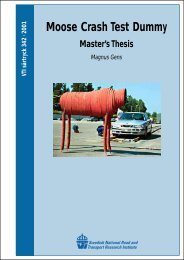Vehicle control and drowsiness - VTI
Vehicle control and drowsiness - VTI
Vehicle control and drowsiness - VTI
- No tags were found...
You also want an ePaper? Increase the reach of your titles
YUMPU automatically turns print PDFs into web optimized ePapers that Google loves.
Example 3, subject number 1Figure 19 Lateral position, SDLP <strong>and</strong> estimated <strong>drowsiness</strong> for subjectnumber 1. The lateral position is measured with 10 Hz. The SDLP window is setto 30 seconds. The <strong>drowsiness</strong> was estimated every five minutes.It is much harder to see any effect of SDLP <strong>and</strong> estimated <strong>drowsiness</strong> on thedriving behaviour of subject number 1. The SDLP does not fluctuate much even ifthe subject uses the whole KSS <strong>and</strong> becomes very tired at the end of the drivingperiod, looking at the estimated <strong>drowsiness</strong>. The estimated <strong>drowsiness</strong> can varywithout any variation in the SDLP. This is how it looks in most of the caseswhether the subject is from the tired group or not. Subject number two <strong>and</strong> 17 areexceptions that have higher <strong>and</strong> clearer values when it comes to lateral position.The correlation between estimated <strong>drowsiness</strong> <strong>and</strong> SDLP seems to be low. So isSDLP a bad indicator of <strong>drowsiness</strong> or is the rating scale a bad indicator of<strong>drowsiness</strong>? The KSS is validated, but is it useful as reference value for<strong>drowsiness</strong> in this context?50 <strong>VTI</strong> meddel<strong>and</strong>e 922A


